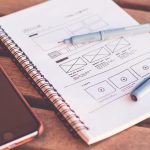Essential Interview Guide for Design Engineers: Tips and Techniques to Ace Your Next Job Interview
Navigating the labyrinthine world of job interviews can be a daunting task, particularly for design engineers who must not only showcase their technical prowess but also their creativity and problem-solving abilities. It’s essential to approach this challenge with preparation, confidence, and a touch of flair. Here’s a treasure trove of insights to help you shine in your next interview.
1. Know Your Craft Inside Out
In the realm of design engineering, your technical skills are your bread and butter. Familiarise yourself with the latest software and tools that dominate the industry. Whether it’s CAD, CAM, or the latest simulation software, staying abreast of technological advancements is key. Moreover, be prepared to discuss your previous projects in detail. What were the challenges? How did you overcome them? This isn’t just about showcasing your success; it’s about demonstrating your thought process and adaptability.
2. Showcase Your Portfolio
A picture is worth a thousand words, and in your case, a well-curated portfolio speaks volumes. Ensure that your portfolio highlights a diverse range of projects, showcasing not only your technical skills but also your ability to think outside the box. Include sketches, prototypes, and finished products, accompanied by succinct explanations of your role and the design process. Remember, storytelling is powerful; narrate the journey of each project, emphasising innovations and lessons learned.
3. Prepare for Technical Questions
Anticipate a barrage of technical questions that test your knowledge and critical thinking. These may range from specific engineering principles to scenario-based queries that assess your problem-solving capabilities. Brush up on your fundamentals, but don’t stop there. Engage in mock interviews with peers or mentors. This practice helps you articulate your thoughts clearly and efficiently, which is crucial under pressure.
4. Emphasise Soft Skills
While technical expertise is paramount, don’t underestimate the importance of soft skills. Employers are on the lookout for candidates who can communicate effectively, collaborate with diverse teams, and manage time efficiently. Prepare examples that demonstrate your interpersonal skills and how they contributed to the success of a project. Perhaps you led a team through a challenging design phase or resolved a conflict among team members—these anecdotes can set you apart.
5. Research the Company
Before stepping into the interview room, immerse yourself in the company’s culture, values, and recent projects. Understanding their design philosophy and industry standing will not only help you tailor your responses but also enable you to ask pertinent questions. This displays genuine interest and initiative, qualities every employer values.
6. Dress the Part
While it may seem trivial, your attire can significantly influence first impressions. Aim for a professional look that aligns with the company’s dress code. A well-fitted suit or smart casual attire can convey your seriousness about the position. It’s about feeling confident in your appearance while respecting the company’s culture.
7. Follow Up
After you’ve aced the interview, don’t forget to send a gracious thank-you email. This small gesture reinforces your interest in the position and leaves a positive impression. Mention specific points from the conversation that resonated with you; it shows attentiveness and professionalism.
Final Thoughts
A successful interview is a blend of preparation, self-awareness, and an authentic display of your capabilities. Embrace the process with enthusiasm and confidence. Remember, each interview is a stepping stone towards your ultimate career goal. As you prepare, know that resources like CVPortal are continuously at your service, providing high-quality CV references to enhance your job search. Happy interviewing!


